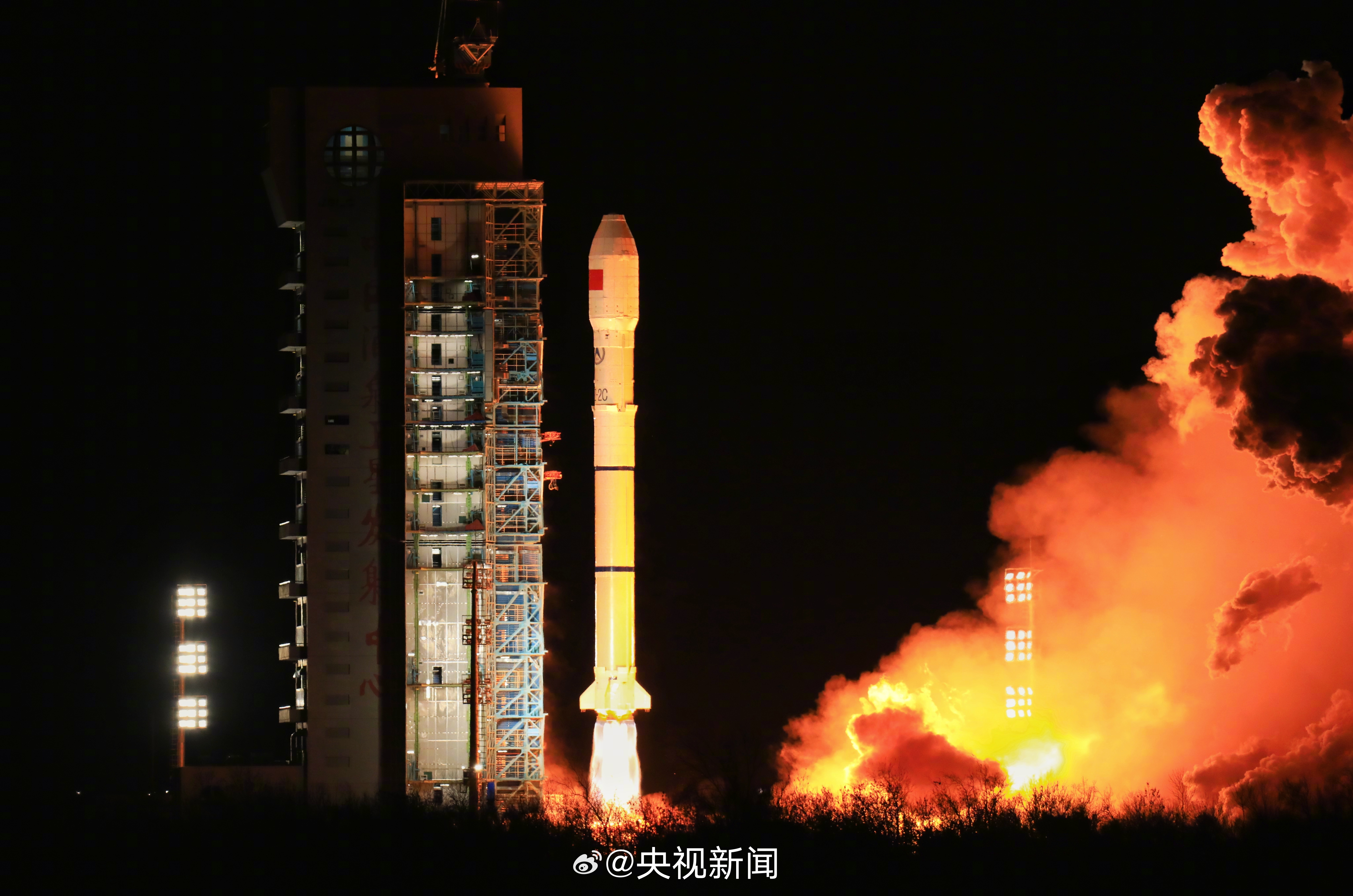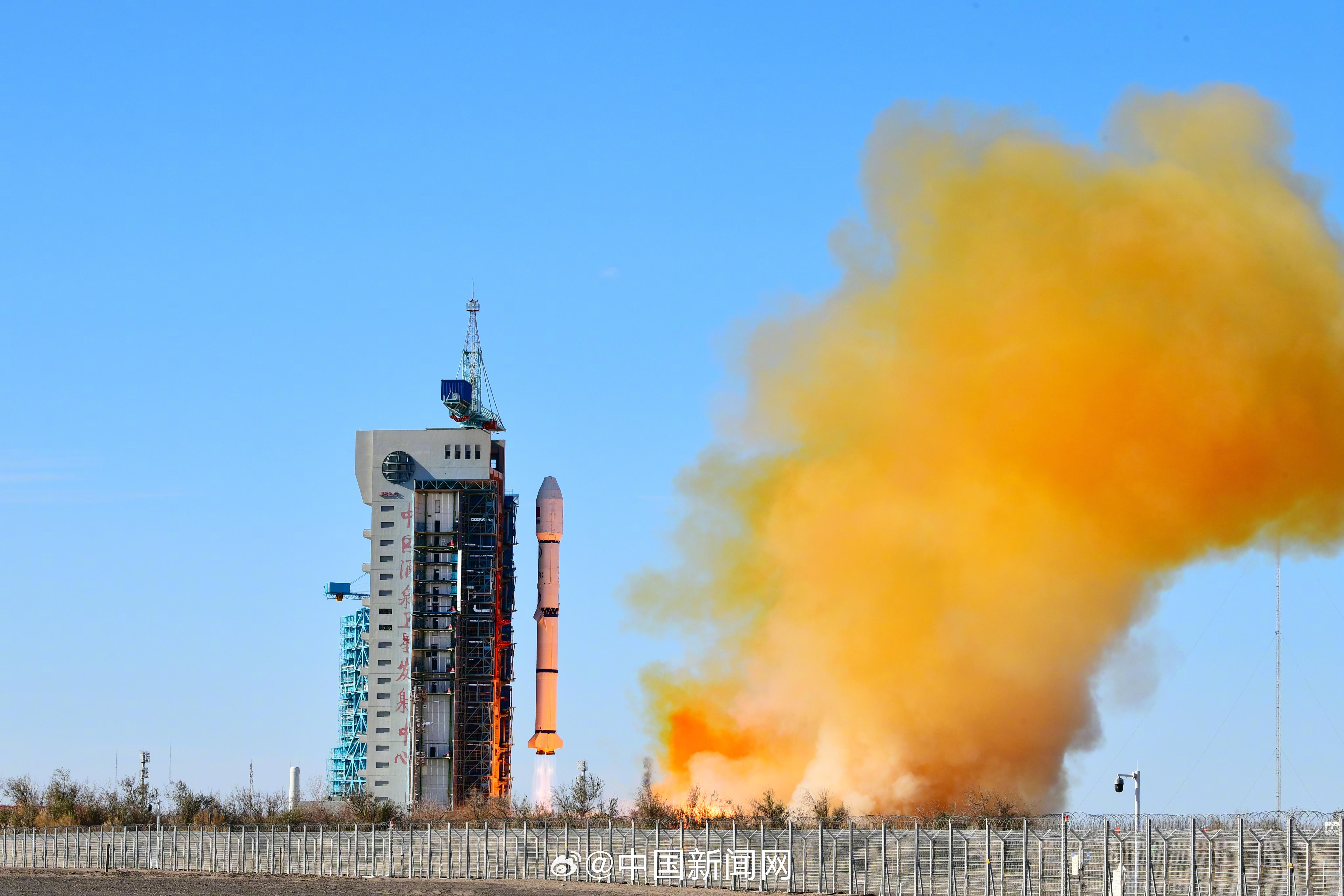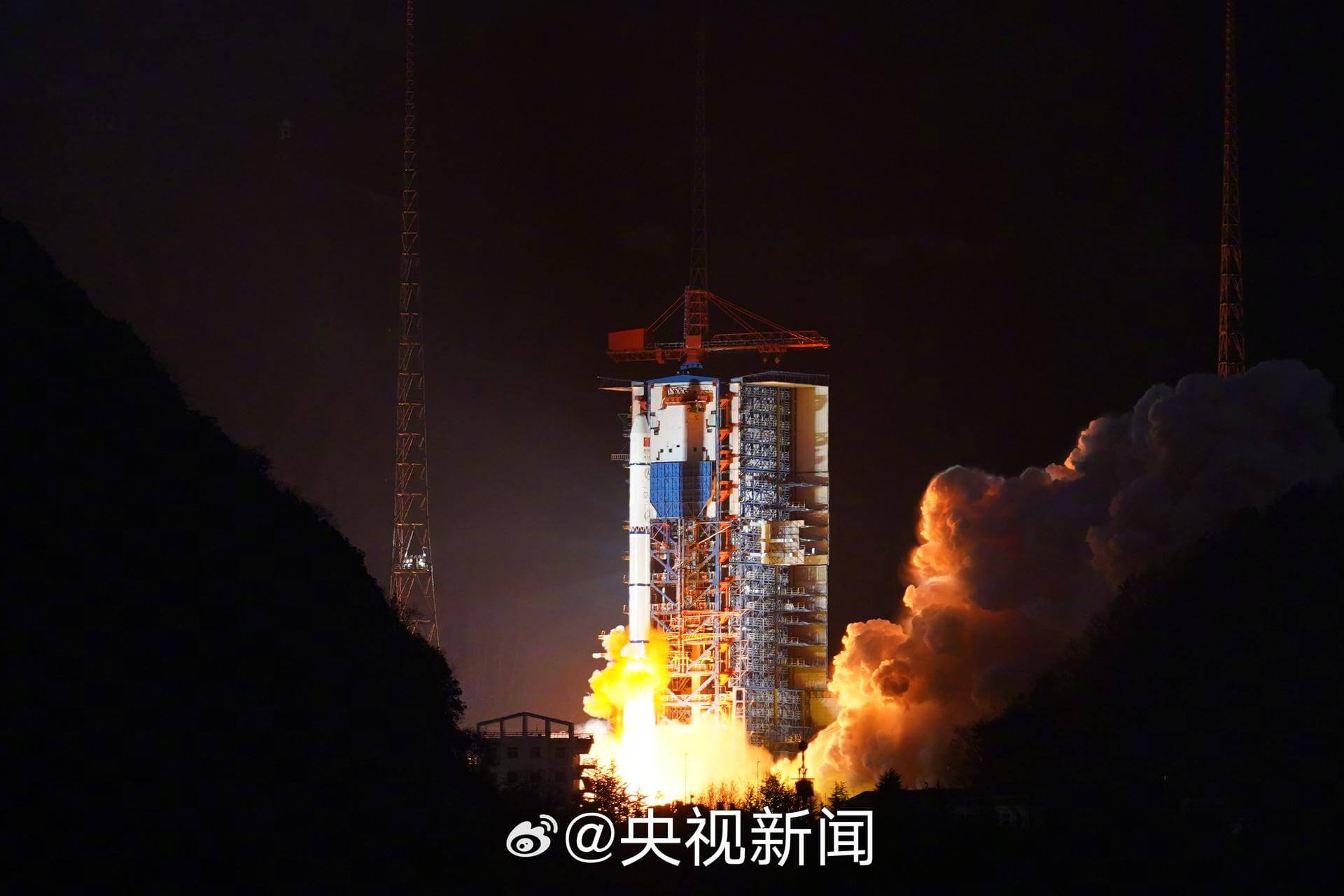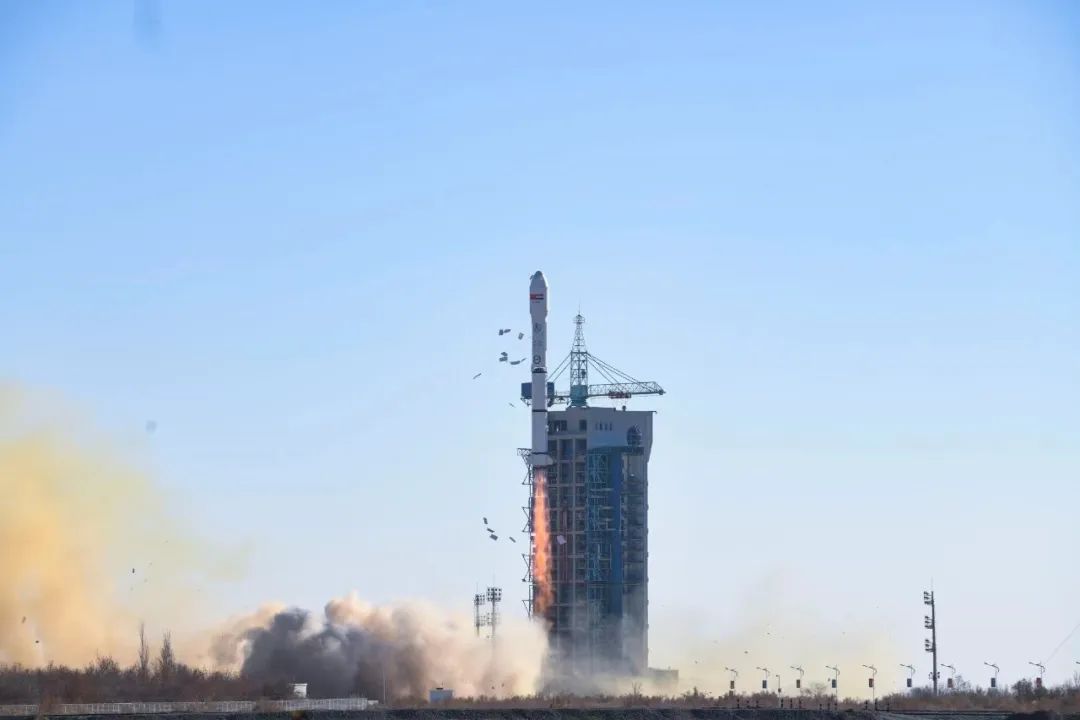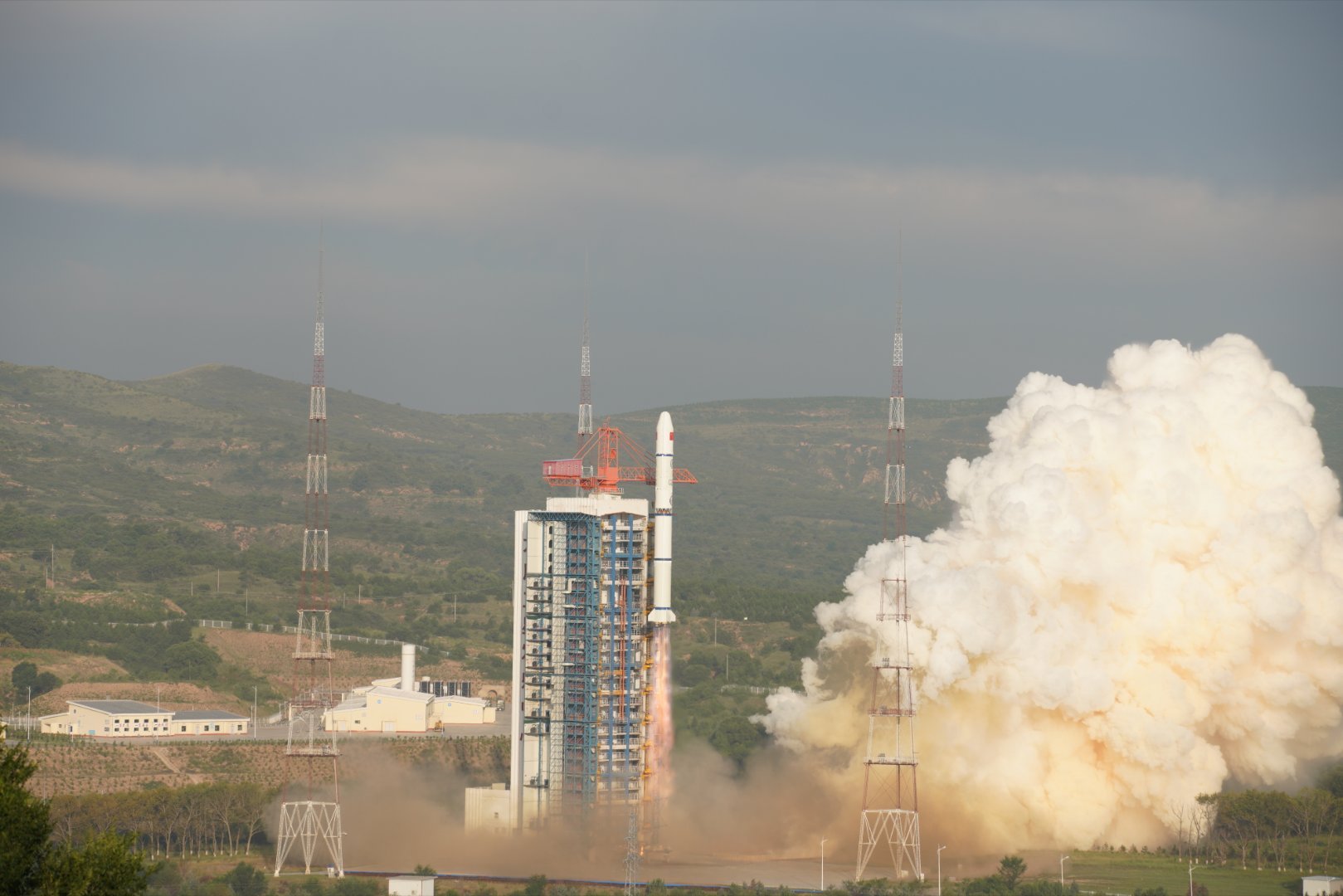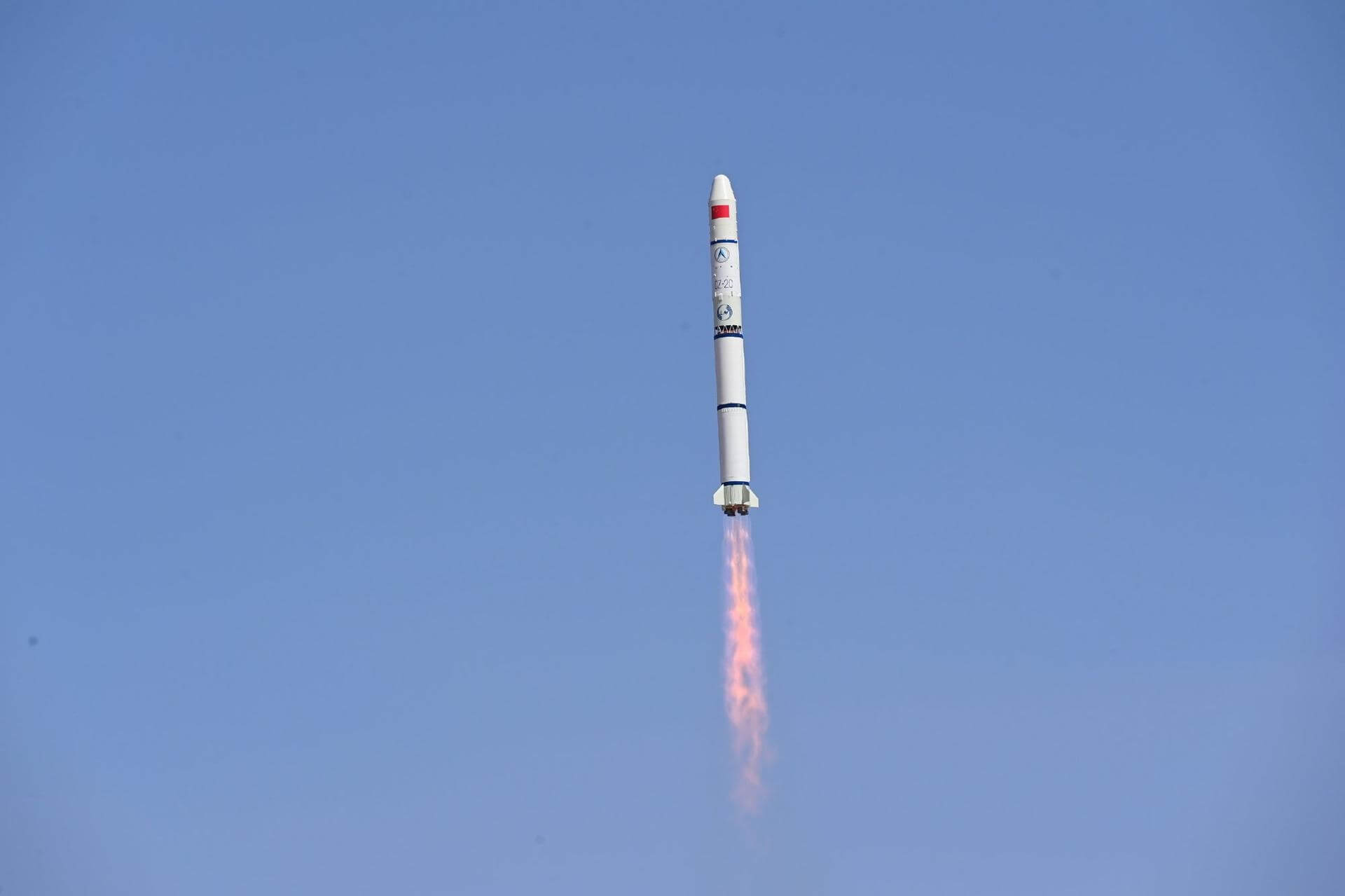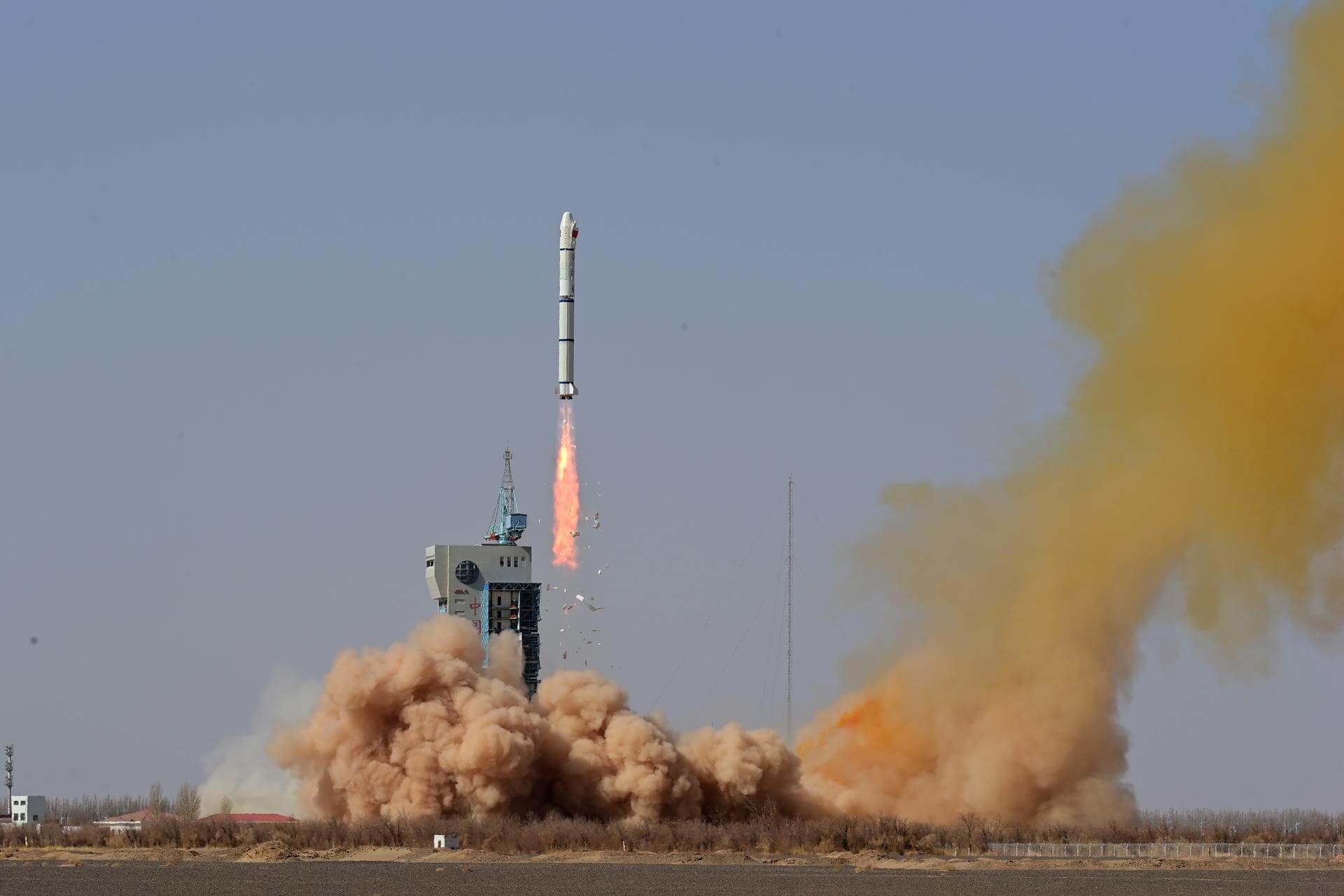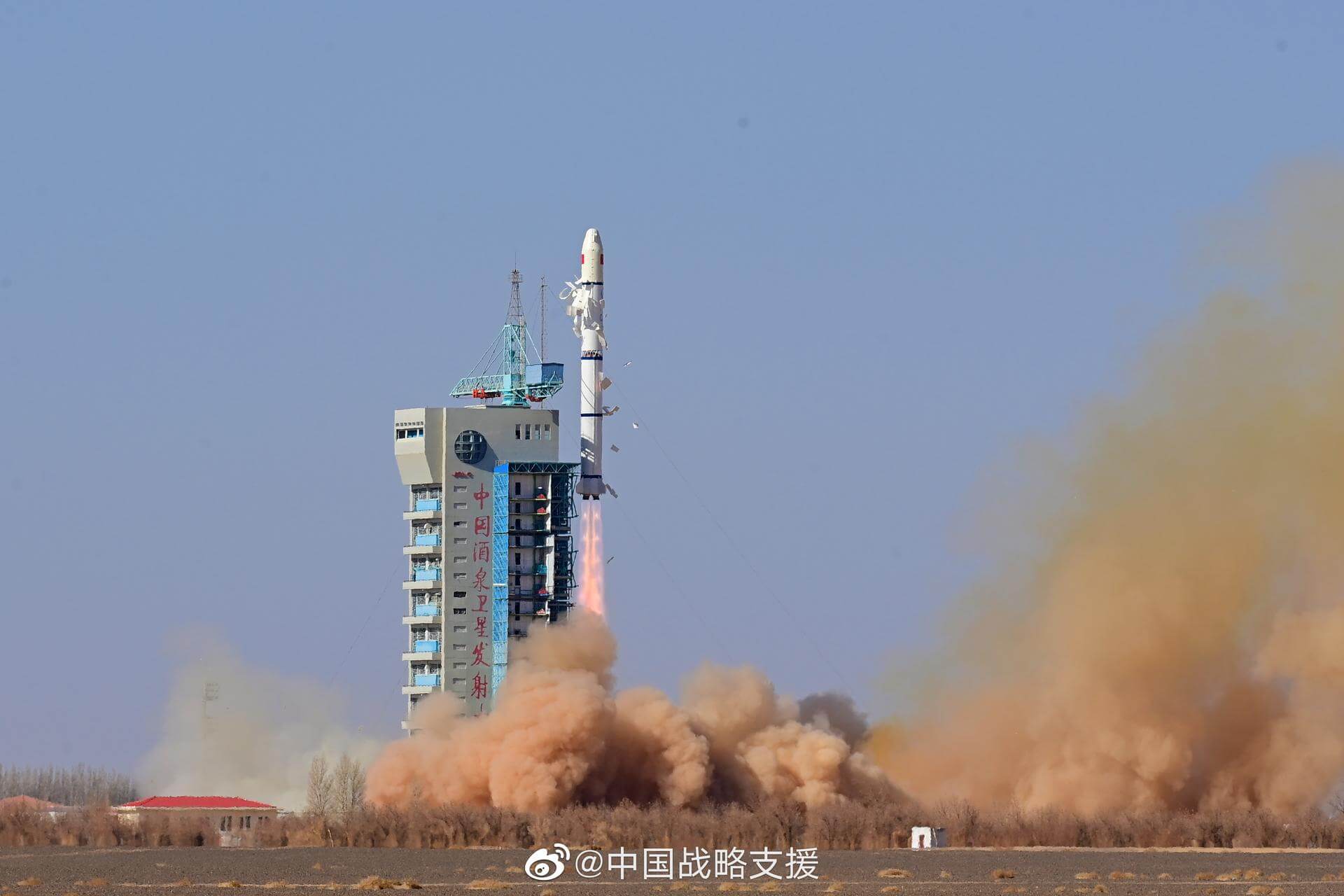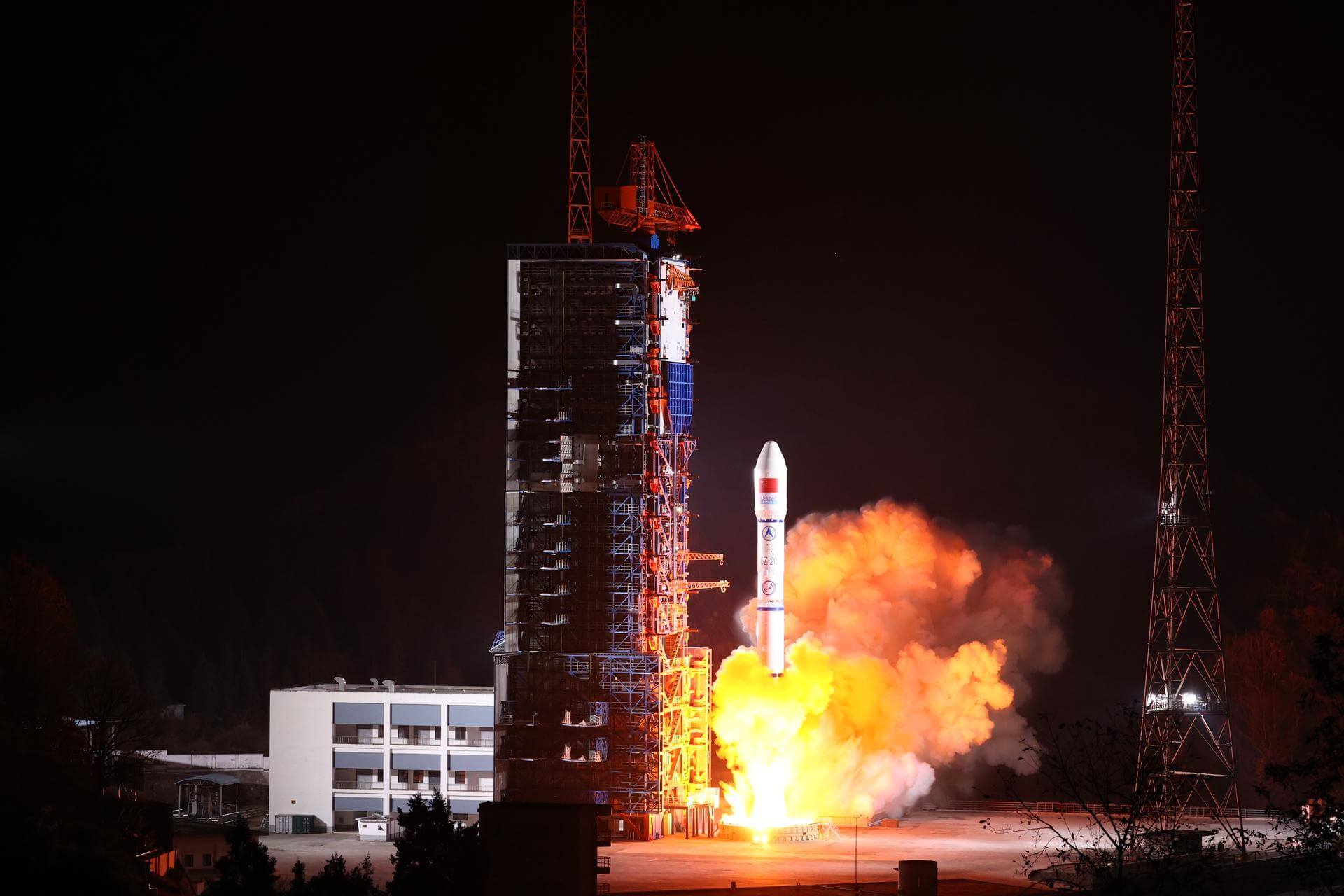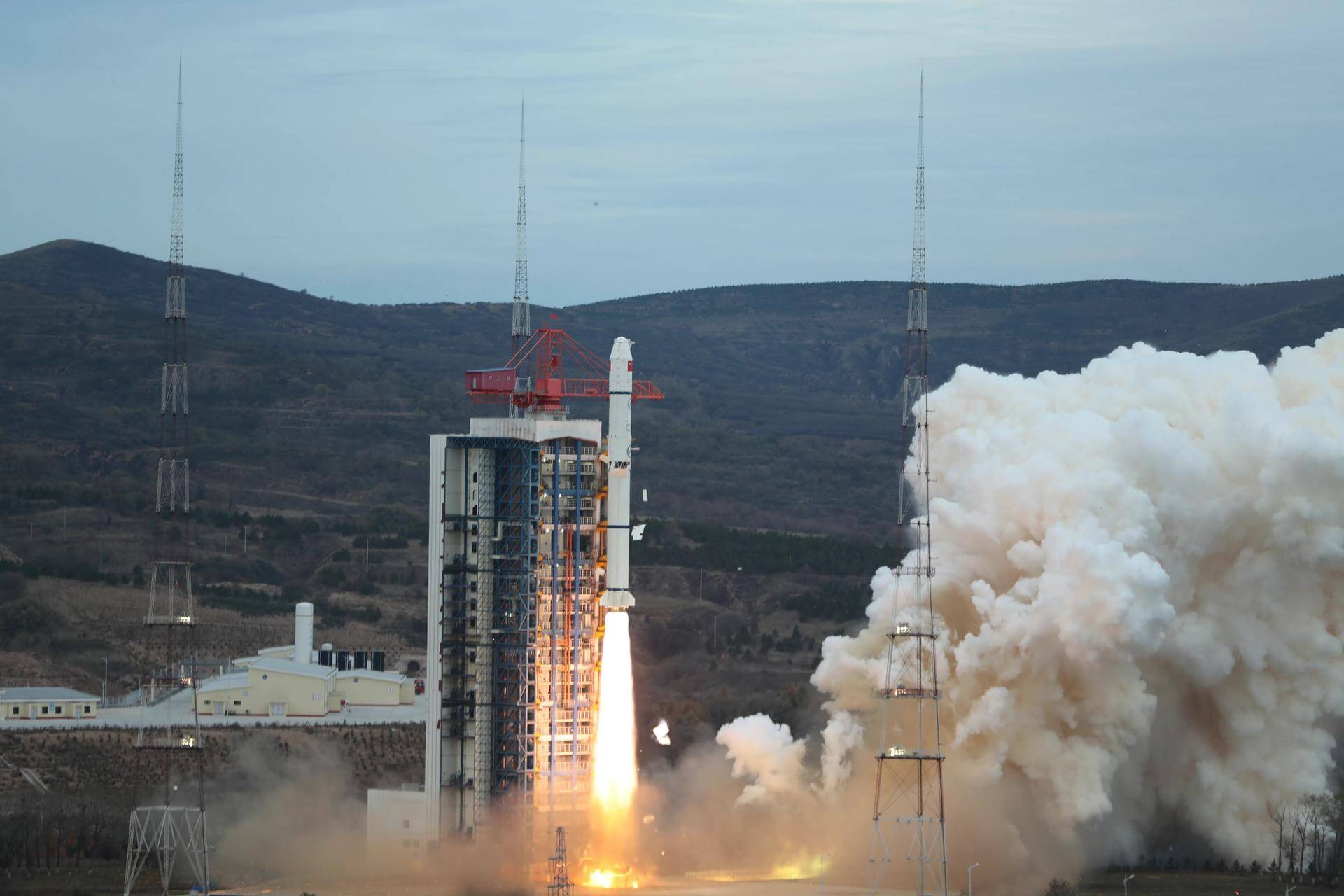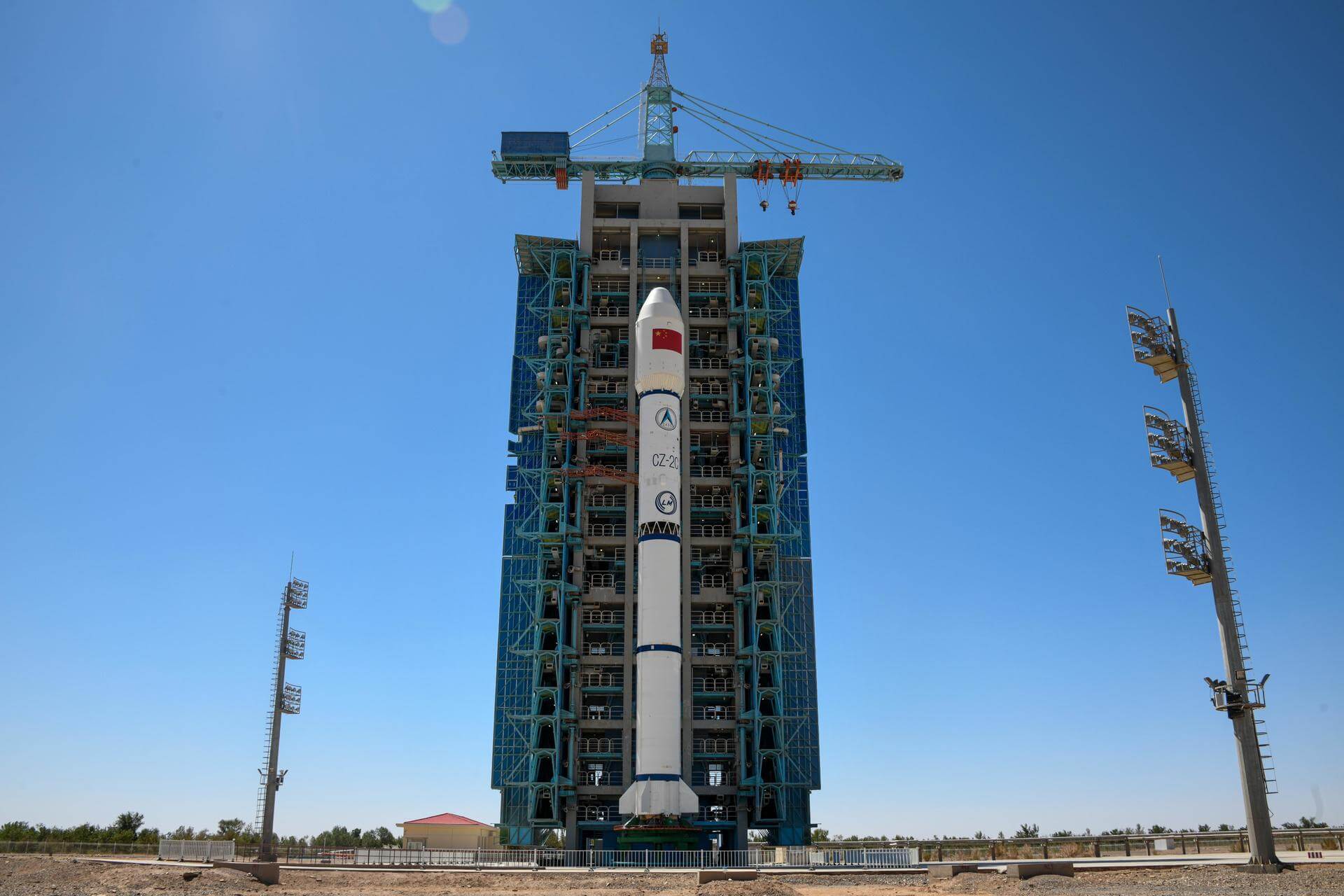
Long March 2C
ActiveChina Aerospace Science and Technology Corporation (CASC)
Sept. 9, 1982
Description
The Long March 2C is a family of expendable launch vehicles made and operated by China. It is a two stage launch vehicle with storable propellants, consisting of Nitrogen Tetroxide and Unsymmetrical Dimethylhydrazine.
Specifications
-
Stages
2 -
Length
42.0 m -
Diameter
3.35 m -
Fairing Diameter
3.35 m -
Launch Mass
233.0 T -
Thrust
―
Family
-
Name
Long March 2C -
Family
― -
Variant
C -
Alias
― -
Full Name
Long March 2C
Payload Capacity
-
Launch Cost
― -
Low Earth Orbit
3850.0 kg -
Geostationary Transfer
Orbit
― -
Direct Geostationary
― -
Sun-Synchronous Capacity
1400.0 kg
China Aerospace Science and Technology Corporation
Government
Chairman & President: Lei Fanpei
CASC 1999The China Aerospace Science and Technology Corporation (CASC) is the main contractor for the Chinese space program. It is state-owned and has a number of subordinate entities which design, develop and manufacture a range of spacecraft, launch vehicles, strategic and tactical missile systems, and ground equipment. It was officially established in July 1999 as part of a Chinese government reform drive, having previously been one part of the former China Aerospace Corporation. Various incarnations of the program date back to 1956.
Long March 2C | Shijian 30 A-C
China Aerospace Science and Technology Corporation | ChinaJiuquan Satellite Launch Center, People's Republic of China
Nov. 19, 2025, 4:01 a.m.
Long March 2C | SuperView Neo 1-03 & 04
China Aerospace Science and Technology Corporation | ChinaJiuquan Satellite Launch Center, People's Republic of China
Feb. 27, 2025, 7:08 a.m.
Long March 2C | SuperView Neo 2-03 & 04
China Aerospace Science and Technology Corporation | ChinaJiuquan Satellite Launch Center, People's Republic of China
Nov. 24, 2024, 11:39 p.m.
Long March 2C | PIESAT-2 01-04
China Aerospace Science and Technology Corporation | ChinaJiuquan Satellite Launch Center, People's Republic of China
Nov. 9, 2024, 3:39 a.m.
Long March 2C | Yaogan 43 Group 03
China Aerospace Science and Technology Corporation | ChinaXichang Satellite Launch Center, People's Republic of China
Oct. 23, 2024, 1:09 a.m.
Long March 2C | Space Variable Objects Monitor (SVOM)
China Aerospace Science and Technology Corporation | ChinaXichang Satellite Launch Center, People's Republic of China
June 22, 2024, 7 a.m.
Status: Launch Successful
Mission:
The Space Variable Objects Monitor (SVOM) is a French/Chinese planned small X-ray telescope satellite under development by China National Space Administration (CNSA) and the Centre National d'Études Spatiales (CNES). SVOM will study the explosions of massive stars by analysing the resulting gamma-ray bursts. The lightweight X-ray mirror for SVOM weighs just 1 kg (2.2 lb). SVOM will add new capabilities to the work of finding gamma-ray bursts currently being done by the multinational satellite Swift. Its anti-solar pointing strategy makes the Earth cross the field of view of its payload every orbit.
Low Earth OrbitLong March 2C | Geely Constellation Group 02
China Aerospace Science and Technology Corporation | ChinaXichang Satellite Launch Center, People's Republic of China
Feb. 2, 2024, 11:37 p.m.
Long March 2C | Einstein Probe
China Aerospace Science and Technology Corporation | ChinaXichang Satellite Launch Center, People's Republic of China
Jan. 9, 2024, 7:03 a.m.
Status: Launch Successful
Mission:
The Einstein Probe (EP) is a Chinese Wide-Field X-ray astronomy observatory for detecting high energy flashes of cataclysmic cosmic events. These includes tidal disruption events (stars pulled apart by supermassive black holes), supernovae, and high-energy, electromagnetic counterparts of gravitational wave events. The spacecraft, weighing ~1400 kilograms, will be launched into a 600-kilometer-high, low-inclination orbit. The probe's instruments include a Wide-field X-ray Telescope (WXT) with a field of view of 3,600 square degrees, employing cutting-edge "lobster eye" optics to view X-ray events more deeply and widely than previously possible, and a Follow-up X-ray Telescope (FXT), developed in collaboration with Europe, that performs follow-up detailed observations as soon as WXT detects an X-ray event. The Einstein Probe mission is managed by the NSSC, with participation from the CAS's NAOC, the Institute of High Energy Physics (IHEP), the Shanghai Institute of Technical Physics (SITP), and the Innovation Academy for Microsatellites, a spacecraft manufacturer that has previously produced space science and Beidou navigation spacecraft. The European Space Agency is contributing to the mission with a mirror module for the FXT instrument, as well as ground station and science management support. The FXT instrument is also supported by Germany's Max Planck Institute for Extraterrestrial Physics.
Low Earth OrbitLong March 2C | MisrSat-2
China Aerospace Science and Technology Corporation | ChinaJiuquan Satellite Launch Center, People's Republic of China
Dec. 4, 2023, 4:10 a.m.
Status: Launch Successful
Mission:
MisrSat-2 is an Earth observation satellite for the Egyptian Space Agency built by China, with participation from Egyptian engineers and scientists offering opportunity to acquire on-the-project experience in satellite design and integration from China, using facilities available in Egypt. Also riding on this launch is Starpool-02A/B, multi-purpose communication, remote sensing and navigation enhancement satellites from Beijing based ELLIPSPACE.
Sun-Synchronous OrbitLong March 2C | 5 m S-SAR-02 (Huanjing-2F)
China Aerospace Science and Technology Corporation | ChinaTaiyuan Satellite Launch Center, People's Republic of China
Aug. 8, 2023, 10:53 p.m.
Long March 2C | MUST-1A/B & Luojia-2 01
China Aerospace Science and Technology Corporation | ChinaJiuquan Satellite Launch Center, People's Republic of China
May 21, 2023, 8 a.m.
Status: Launch Successful
Mission:
Macau Science Satellite-1 (MUST-1A/B) are 2 magnetosphere research satellites from the Macau University of Science and Technology (MUST) aiming to study the different layers of the Earth’s magnetosphere system, particularly in the South Atlantic Anomaly by studying the origin and evolution of the geomagnetic field and the geomagnetic inversion mechanism, and draw a high-precision and high-resolution lithospheric geomagnetic map. Luojia-2 01 is a 0.5 m resolution Earth observation Synthetic-aperture radar satellite from Wuhan University.
Low Earth OrbitLong March 2C | Horus 2
China Aerospace Science and Technology Corporation | ChinaJiuquan Satellite Launch Center, People's Republic of China
March 13, 2023, 4:02 a.m.
Long March 2C | Horus 1
China Aerospace Science and Technology Corporation | ChinaJiuquan Satellite Launch Center, People's Republic of China
Feb. 24, 2023, 4:01 a.m.
Long March 2C | APStar 6E
China Aerospace Science and Technology Corporation | ChinaXichang Satellite Launch Center, People's Republic of China
Jan. 12, 2023, 6:10 p.m.
Status: Launch Successful
Mission:
APStar 6E is a small high-throughput communication satellite for Hong Kong based APT Satellite. It is based on the new DFH-3E small GEO platform developed by the China Academy of Space Technology (CAST), featuring all-electric propulsion. The satellite will provide satellite telecommunication services in the Asia-Pacific region. Payload includes a transfer stage to send the satellite to GTO.
Geostationary Transfer OrbitLong March 2C | 5 m S-SAR-01 (Huanjing-2E)
China Aerospace Science and Technology Corporation | ChinaTaiyuan Satellite Launch Center, People's Republic of China
Oct. 12, 2022, 10:53 p.m.
Long March 2C | SuperView Neo 2-01 & 02
China Aerospace Science and Technology Corporation | ChinaTaiyuan Satellite Launch Center, People's Republic of China
July 15, 2022, 10:57 p.m.
Long March 2C | Geely Constellation Group 01
China Aerospace Science and Technology Corporation | ChinaXichang Satellite Launch Center, People's Republic of China
June 2, 2022, 4 a.m.
Long March 2C | SuperView Neo 1-01 & 02
China Aerospace Science and Technology Corporation | ChinaJiuquan Satellite Launch Center, People's Republic of China
April 29, 2022, 4:11 a.m.
Long March 2C | Yinhe-1 (x6)
China Aerospace Science and Technology Corporation | ChinaXichang Satellite Launch Center, People's Republic of China
March 5, 2022, 6:01 a.m.
Status: Launch Successful
Mission:
The first flight dedicated to the launch of the Internet constellation of GalaxySpace, a private company, planning the total deployment of more than 1000 satellites in earth orbit. The satellites broadcast in 5G, with a capacity of 10 Gb.
Low Earth OrbitLong March 2C | Yaogan-30-10
China Aerospace Science and Technology Corporation | ChinaXichang Satellite Launch Center, People's Republic of China
July 19, 2021, 12:19 a.m.
Long March 2C | Yaogan-30-09
China Aerospace Science and Technology Corporation | ChinaXichang Satellite Launch Center, People's Republic of China
June 18, 2021, 6:30 a.m.
Long March 2C | Yaogan-30-08
China Aerospace Science and Technology Corporation | ChinaXichang Satellite Launch Center, People's Republic of China
May 6, 2021, 6:11 p.m.
Long March 2C | Yaogan-30-07
China Aerospace Science and Technology Corporation | ChinaXichang Satellite Launch Center, People's Republic of China
Oct. 26, 2020, 3:19 p.m.
Status: Launch Successful
Mission:
The Yaogan 30-01-01 to 30-01-03 (Remote Sensing Satellite-30-01-01 to 30-01-03) satellites, were launched by CZ-2C rocket from China's Xichang space center on 29 September 2017. The purpose is not confirmed, although the news reports hint towards a SIGINT mission, especially to detect ships by their radio emissions. They are also known as CX 5 by the manufacturer. The satellites are spaced by 120° in their orbit.
Low Earth OrbitLong March 2C | Haiyang 1D
China Aerospace Science and Technology Corporation | ChinaTaiyuan Satellite Launch Center, People's Republic of China
June 10, 2020, 6:31 p.m.
Status: Launch Successful
Mission:
Haiyang is a series of Chinese marine remote sensing satellites. Haiyang 1C is the follow-up of the Haiyang 1A and 1B satellites. It is intended for ocean monitoring and will be providing data on the temperature and dynamics of coastal waters and global oceans in China.
Sun-Synchronous OrbitLong March 2C | Yaogan-30-06
China Aerospace Science and Technology Corporation | ChinaXichang Satellite Launch Center, People's Republic of China
March 24, 2020, 3:43 a.m.
Status: Launch Successful
Mission:
The Yaogan 30-01-01 to 30-01-03 (Remote Sensing Satellite-30-01-01 to 30-01-03) satellites, were launched by CZ-2C rocket from China's Xichang space center on 29 September 2017. The purpose is not confirmed, although the news reports hint towards a SIGINT mission, especially to detect ships by their radio emissions. They are also known as CX 5 by the manufacturer. The satellites are spaced by 120° in their orbit.
Low Earth OrbitLong March 2C | Yaogan-30-05
China Aerospace Science and Technology Corporation | ChinaXichang Satellite Launch Center, People's Republic of China
July 26, 2019, 3:57 a.m.
Long March 2C | CFOSAT
China Aerospace Science and Technology Corporation | ChinaJiuquan Satellite Launch Center, People's Republic of China
Oct. 29, 2018, 12:43 a.m.
Status: Launch Successful
Mission:
CFOSAT (China-France Oceanography SATellite) is a joint mission of the Chinese (CNSA) and French (CNES) space agencies with the goal to monitor the ocean surface winds and waves and to provide information on related ocean and atmospheric science and applications. The primary objective of CFOSAT is to monitor on a global scale the wind and waves at the ocean surface.
Sun-Synchronous Orbit #CFOSATLong March 2C | Haiyang 1C
China Aerospace Science and Technology Corporation | ChinaTaiyuan Satellite Launch Center, People's Republic of China
Sept. 7, 2018, 3:15 a.m.
Status: Launch Successful
Mission:
Haiyang is a series of Chinese marine remote sensing satellites. Haiyang 1C is the follow-up of the Haiyang 1A and 1B satellites. It is intended for ocean monitoring and will be providing data on the temperature and dynamics of coastal waters and global oceans in China.
Sun-Synchronous OrbitLong March 2C | XJS-A & XJS-B
China Aerospace Science and Technology Corporation | ChinaXichang Satellite Launch Center, People's Republic of China
June 27, 2018, 3:30 a.m.
Long March 2C | 3 x Yaogan-30
China Aerospace Science and Technology Corporation | ChinaXichang Satellite Launch Center, People's Republic of China
Jan. 25, 2018, 5:39 a.m.
Long March 2C | 3 x Yaogan-30
China Aerospace Science and Technology Corporation | ChinaXichang Satellite Launch Center, People's Republic of China
Dec. 25, 2017, 7:44 p.m.
Long March 2C | 3 x Yaogan-30
China Aerospace Science and Technology Corporation | ChinaXichang Satellite Launch Center, People's Republic of China
Nov. 24, 2017, 6:10 p.m.
Long March 2C | 3 x Yaogan-30-01
China Aerospace Science and Technology Corporation | ChinaXichang Satellite Launch Center, People's Republic of China
Sept. 29, 2017, 4:21 a.m.
Long March 2C | Yaogan-23
China Aerospace Science and Technology Corporation | ChinaTaiyuan Satellite Launch Center, People's Republic of China
Nov. 14, 2014, 6:53 p.m.
Long March 2C | Shijian 11-08
China Aerospace Science and Technology Corporation | ChinaJiuquan Satellite Launch Center, People's Republic of China
Oct. 27, 2014, 6:59 a.m.
Long March 2C | Shijian 11-07
China Aerospace Science and Technology Corporation | ChinaJiuquan Satellite Launch Center, People's Republic of China
Sept. 28, 2014, 5:13 a.m.
Long March 2C | Shijian 11-06
China Aerospace Science and Technology Corporation | ChinaJiuquan Satellite Launch Center, People's Republic of China
March 31, 2014, 2:46 a.m.
Long March 2C | Yaogan 18
China Aerospace Science and Technology Corporation | ChinaTaiyuan Satellite Launch Center, People's Republic of China
Oct. 29, 2013, 2:50 a.m.
Long March 2C | Shijian 11-05
China Aerospace Science and Technology Corporation | ChinaJiuquan Satellite Launch Center, People's Republic of China
July 15, 2013, 9:27 a.m.
Long March 2C | Huanjing 1C
China Aerospace Science and Technology Corporation | ChinaTaiyuan Satellite Launch Center, People's Republic of China
Nov. 18, 2012, 10:53 p.m.
Long March 2C | Yaogan 13
China Aerospace Science and Technology Corporation | ChinaTaiyuan Satellite Launch Center, People's Republic of China
Nov. 29, 2011, 6:50 p.m.
Long March 2C | Shijian 10-04
China Aerospace Science and Technology Corporation | ChinaJiuquan Satellite Launch Center, People's Republic of China
Aug. 18, 2011, 9:28 a.m.
Long March 2C | Shijian 10-02
China Aerospace Science and Technology Corporation | ChinaJiuquan Satellite Launch Center, People's Republic of China
July 29, 2011, 7:42 a.m.
Long March 2C | Shijian 10-03
China Aerospace Science and Technology Corporation | ChinaJiuquan Satellite Launch Center, People's Republic of China
July 6, 2011, 4:28 a.m.
Long March 2C | Shi Jian 11-01
China Aerospace Science and Technology Corporation | ChinaJiuquan Satellite Launch Center, People's Republic of China
Nov. 12, 2009, 2:45 a.m.
Long March 2C | Yaogan Weixing 6
China Aerospace Science and Technology Corporation | ChinaTaiyuan Satellite Launch Center, People's Republic of China
April 22, 2009, 2:55 a.m.
Long March 2C | Hai Yang 1B
China Aerospace Science and Technology Corporation | ChinaTaiyuan Satellite Launch Center, People's Republic of China
April 11, 2007, 3:27 a.m.
Long March 2C | Shi Jian 8
China Aerospace Science and Technology Corporation | ChinaJiuquan Satellite Launch Center, People's Republic of China
Sept. 9, 2006, 7 a.m.
Status: Launch Successful
Mission:
SJ 8 (Shijian 8) is a recoverable satellite based on the FSW type reentry vehicle, which is used to expose 215 kilograms of seeds of plants and fungus to the space environment. It was recovered after several weeks. Once the space-bred seeds are recovered, the Ministry of Agriculture organized research institutions to develop new seeds featuring high yield, good quality and high efficiency.
Low Earth OrbitLong March 2C | Fanhui Shi Weixing (21)
China Aerospace Science and Technology Corporation | ChinaJiuquan Satellite Launch Center, People's Republic of China
Aug. 2, 2005, 7:30 a.m.
Long March 2C | Shiyan Weixing 2
China Aerospace Science and Technology Corporation | ChinaXichang Satellite Launch Center, People's Republic of China
Nov. 18, 2004, 10:45 a.m.
Long March 2C | Fanhui Shi Weixing (19)
China Aerospace Science and Technology Corporation | ChinaJiuquan Satellite Launch Center, People's Republic of China
Aug. 29, 2004, 7:50 a.m.
Status: Launch Successful
Mission:
Recoverable satellite officially stated to be conducting space scientific research, land surveying, mapping and other scientific experiments. Said to have improved experimental technology, with higher orientation precision and more complex on-board computers and software.
Low Earth OrbitLong March 2C | Shiyan Weixing 1
China Aerospace Science and Technology Corporation | ChinaXichang Satellite Launch Center, People's Republic of China
April 18, 2004, 3:59 p.m.
Long March 2C | FSW-1 5
China Aerospace Science and Technology Corporation | ChinaJiuquan Satellite Launch Center, People's Republic of China
Oct. 8, 1993, 8 a.m.
Long March 2C | FSW-1 4 & Freja
China Aerospace Science and Technology Corporation | ChinaJiuquan Satellite Launch Center, People's Republic of China
Oct. 6, 1992, 6:20 a.m.
Long March 2C | FSW-1 3
China Aerospace Science and Technology Corporation | ChinaJiuquan Satellite Launch Center, People's Republic of China
Oct. 5, 1990, 6:14 a.m.
Long March 2C | FSW-1 2
China Aerospace Science and Technology Corporation | ChinaJiuquan Satellite Launch Center, People's Republic of China
Aug. 5, 1988, 7:28 a.m.
Long March 2C | FSW-1 1
China Aerospace Science and Technology Corporation | ChinaJiuquan Satellite Launch Center, People's Republic of China
Sept. 9, 1987, 7:15 a.m.
Long March 2C | FSW-0 9
China Aerospace Science and Technology Corporation | ChinaJiuquan Satellite Launch Center, People's Republic of China
Aug. 5, 1987, 6:39 a.m.
Long March 2C | FSW-0 8
China Aerospace Science and Technology Corporation | ChinaJiuquan Satellite Launch Center, People's Republic of China
Oct. 6, 1986, 5:40 a.m.
Long March 2C | FSW-0 7
China Aerospace Science and Technology Corporation | ChinaJiuquan Satellite Launch Center, People's Republic of China
Oct. 21, 1985, 5:04 a.m.
Long March 2C | FSW-0 6
China Aerospace Science and Technology Corporation | ChinaJiuquan Satellite Launch Center, People's Republic of China
Sept. 12, 1984, 5:44 a.m.
Long March 2C | FSW-0 5
China Aerospace Science and Technology Corporation | ChinaJiuquan Satellite Launch Center, People's Republic of China
Aug. 19, 1983, 6 a.m.
Electron
Raise and Shine (RAISE-4)
Rocket Lab Launch Complex 1B - Rocket Lab Launch Complex 1, Mahia Peninsula, New ZealandRAISE-4 (RApid Innovative payload demonstration Satellite-4) is a Japan Aerospace Exploration Agency (JAXA) satellite for on-orbit demonstrations of …
Kuaizhou 11
DEAR-5
Launch Area 95A - Jiuquan Satellite Launch Center, People's Republic of ChinaDEAR-5 is a commercial in-orbit payload and micro-gravity experiments hosting spacecraft developed by Chinese commercial company AZSPACE for various …
Long March 12
SatNet LEO Group 16
Commercial LC-2 - Wenchang Space Launch Site, People's Republic of ChinaA batch of Low Earth Orbit communication satellites for the Chinese state owned SatNet constellation operated by the China Satellite Network Group. …
Falcon 9
Starlink Group 6-90
Space Launch Complex 40 - Cape Canaveral SFS, FL, USAA batch of 29 satellites for the Starlink mega-constellation - SpaceX's project for space-based Internet communication system.
Falcon 9
Starlink Group 15-11
Space Launch Complex 4E - Vandenberg SFB, CA, USAA batch of 27 satellites for the Starlink mega-constellation - SpaceX's project for space-based Internet communication system.

